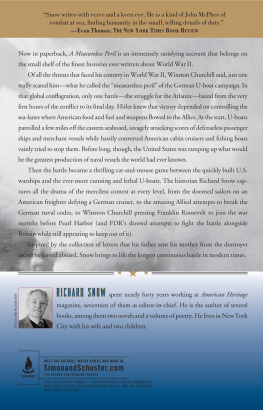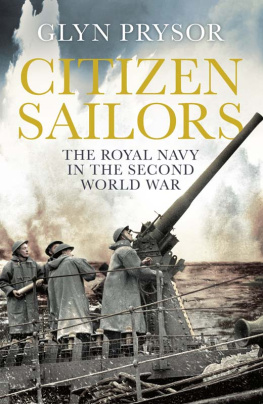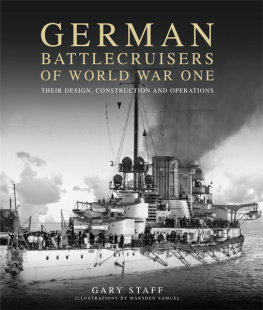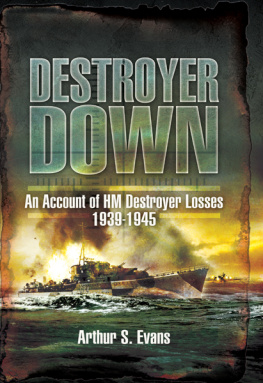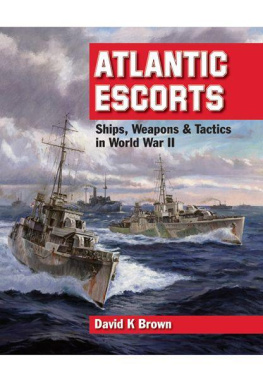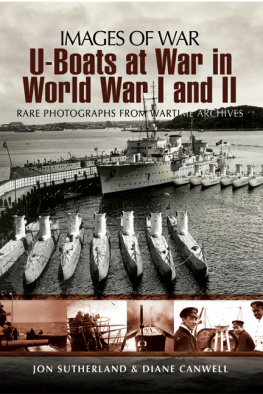Robert F. Cross, author of the presidential biography Sailor in the White House: The Seafaring Life of FDR, is a trustee of the USS Slater, the last destroyer escort still afloat in the United States. The museum ship is fully restored to its original World War II configuration and is moored on the Hudson River in Albany, New York. Cross currently serves as commissioner of the port of Albany and is water commissioner for the city of Albany. He previously was an assistant environmental commissioner for New York State.
Cross, a former award-winning newspaper correspondent, has written for the New York Times, Wall Street Journal, Conservationist, Historic Nantucket, Offshore, and Seaport magazines, among other publications. He has been involved in environmental and historic preservation affairs for many years. Cross, a native of Port Jervis, New York, received his Bachelor of Science degree from the State University of New York at Albany and his Master of Arts degree from the State University College at New Paltz. He lives in Albany, New York, and Nantucket, Massachusetts, with his wife, Sheila, a physician, and Fala, their West Highland White Terrier.
B ack in 2003, while my wife Sheila and I were enjoying a pleasant dinner one evening as guests in Albany, New Yorks venerable old Fort Orange Club, Frank Lasch, president of the Destroyer Escort Historical Museum, asked if I might consider writing a book about the stories of those sailors who served on board destroyer escorts in World War II. He knew my first book, Sailor in the White House: The Seafaring Life of FDR, was finished and I was looking for a new project.
Although the idea sounded interesting, I first wanted to do a little research to see if there really was a story to tell. Well, it did not take long for me to determine that not only was there a remarkable story to tell, but it was one that was little more than a footnote in American historyexcept, of course, among destroyer escort veterans. While they knew what they had done for their country, most Americans had never heard of this remarkable group of teenage sailors.
So I set out to tell their stories and ensure that their contributions to our nation were recorded in the historical record. First, I want to offer my deep appreciation to the ninety-one DE veterans who took the time to speak with me at great length about their days at sea, along with the scores of others who shared their diaries, letters, photographs, and personal memories of their daysand nightsbattling Hitlers U-boats and Japans kamikazes. Without their help, this book simply would have relied upon dry archival records detailing various battles. Instead, using their own words, the stories of these brave and daring young Americans come alive in these pages.
Many others generously gave of their time and efforts so I could better convey the story of these American heroes. Tim Rizzuto, executive director of the Destroyer Escort Historical Museum, provided invaluable assistance by putting me in touch with sailors all around the country and offering expert advice and counsel throughout the course of this project. Tim is assisted by individuals, both in Albany and beyond, who provide him with essential advice in restoring and operating Albanys world-class museum ship, the USS Slater. Several of those individuals provided gracious assistance to me, including Sam Saylor, Marty Davis, Pat Perrella, Anne McCarthy, Pat Stephens, Victor Buck, Don Montrym, Rosehn Gipe, Eric Rivet, Katie Kuhl, and my friend and cousin, Diane Lobb Boyce. I also appreciate the strong support of Frank Lasch and the rest of the museums board of trustees, who do a spectacular job overseeing the Slaters miraculous restoration.
A number of others have been very helpful in locating various documents so I could better tell this story, including Robert Clark, supervisory archivist at the Franklin D. Roosevelt Presidential Library in Hyde Park, New York; Robert B. Hitchings and William Troy Valos of the Kirn Library in Norfolk, Virginia; Lester Weber of the Mariners Museum in Norfolk, Virginia; Therese Gonzalez of the Great Lakes Naval Museum in Illinois; and Donald Cavanaugh, formerly of Gibbs and Cox. I am certain someone has been left off this list, and I hope you will forgive me, knowing that I appreciate all you have done to help me along the way.
While I conducted ninety-one interviews and reviewed dozens of documents, letters, war diaries, and photographs, I could not include every story from every sailor in this book. Because of space limitations many fine stories and eyewitness accounts had to be left out. Although your specific stories may not show up in these pages, rest assured they were essential to my understanding of destroyer escorts and the courageous contributions you made to this nations security.
Now for a note on photographs. As I have said previously, this is not a story about ships. It is a story about an unseasoned crop of teenagers and their young skippers who went to sea to defend their homeland. Unfortunately most archives are filled with photographs of ships and hold very few lifestyle photographs showing the sailors on board these tiny warships, sometimes at sea for months at a time. Thankfully I stumbled upon a collection of remarkable photographs taken by a small-town pharmacist from New Berlin, New York, who, at the age of thirty-one, left his family and one-year-old child to join the Navy. He went on board the USS Liddle as a pharmacists mate. Although cameras generally were not allowed on board ships during wartime, the pharmacists mate was asked by his captain to photographically document life on board their ship.
Harold S. Deal, the small-town pharmacist from upstate New York, was happy to oblige because photography was his hobby. He quickly sent a letter to his wife asking her to mail his camera equipment to the ship. His superb work has provided us with a rare behind-the-scenes look inside the little warship. It was not until after his death in 1991 that Deals family discovered the photographs. Although he never spoke about the war years, today his photos give us a glimpse into everyday life on board a destroyer escort. I am indebted to his grandson, Jeffrey Deal, and his family for allowing me to use these wonderful photographs.
The hardest part of being an author, I have found, is balancing the personal responsibilities of everyday life and work with the all-consuming effort needed to research and write a history book. Fortunately I am blessed with supportive friends and family who, although they may not like it, understand that my absences from family and other functions are part of the all-engrossing job of writing a book. I could not ask for more caring and loving sisters than Janet Dobbs of Port Jervis, New York, and Linda DiPanni of New Canaan, Connecticut. My parents, Francis and Rita Cross, gave me the opportunity to study and learn, for which I always will be grateful.
Over the course of this project, my dear wife, Sheila, has taken on many responsibilities, freeing up my time to conduct interviews, pore over war diaries and ship logs, and try to put it all down on paper in what I hope is a coherent and compelling narrative. But Sheila has given me more than just the gift of time. She is my most important critic, and her careful and precise editing of the manuscript made Shepherds of the Sea a much better and more readable book. That is why, once again, I have dedicated this work to her.
Destroyer Escorts Lost during World War II
T he following destroyer escorts were lost or damaged beyond repair. Those damaged but returned to service are not listed. Source: Destroyer Escort Sailors Association.


